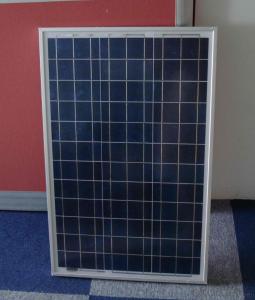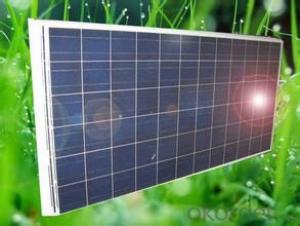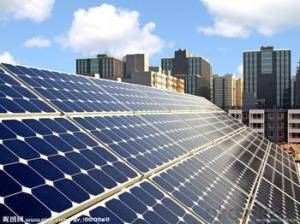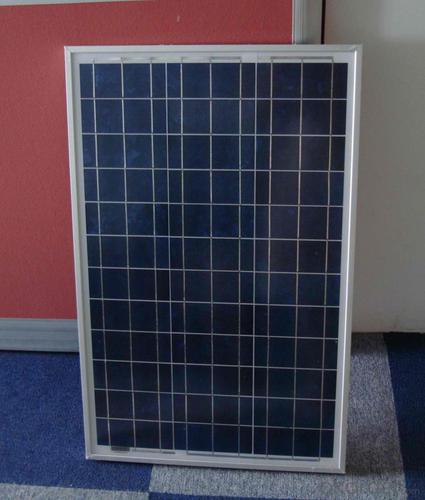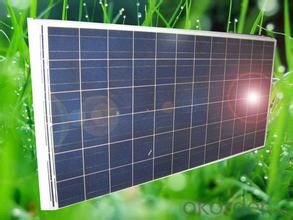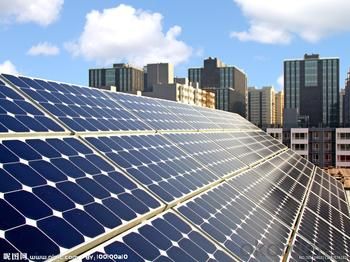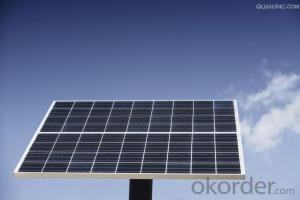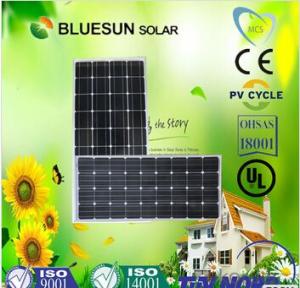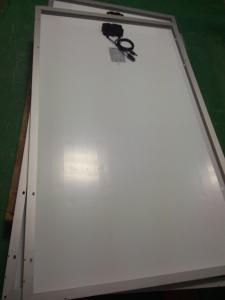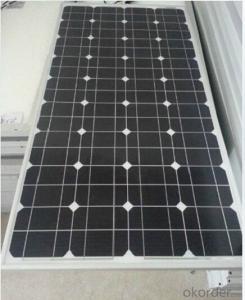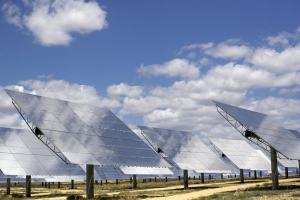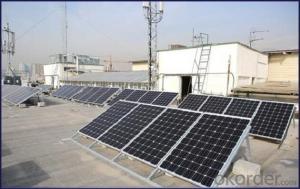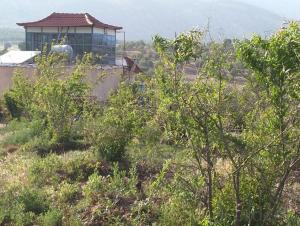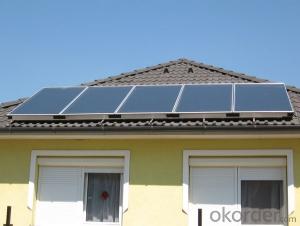Solar Panels Lubbock Texas - 100Wp Solar Module, Solar System, ISO Certified Companies
- Loading Port:
- China main port
- Payment Terms:
- TT OR LC
- Min Order Qty:
- 1 pc
- Supply Capability:
- 100000000 pc/month
OKorder Service Pledge
OKorder Financial Service
You Might Also Like
Quick Details
| Place of Origin: | Guangdong China (Mainland) | Brand Name: | HUAYU | Model Number: | HYS-120WM36V |
| Material: | Monocrystalline Silicon | Size: | 1196*669*35mm | Number of Cells: | 72 |
| Max. Power: | 120W | Certification: | ISO/CE/TUV/UL | Application: | Home |
| Warranty: | 20 years limited warranty on power | Solar Cell: | A-grade,high efficiency | Frame: | Aluminium Alloy |
| Glass: | Toughened Glass | EVA: | Highly Adhesive | Backsheet: | TPT/TPE(Block Humidity and Oxy Effectively ) |
| Specification: | Normal |
Packaging & Delivery
| Packaging Detail: | wood case and pallet |
| Delivery Detail: | 10 days |
Specifications
solar module 100wp
High Quality Monocrystalline solar Panel 120W/36V,also provide solar power system
The Best New photovoltaic solar Panels mono , solar system,120W/36V, solar photovoltaic ,solar system,iso certified companies
Principle of solar system
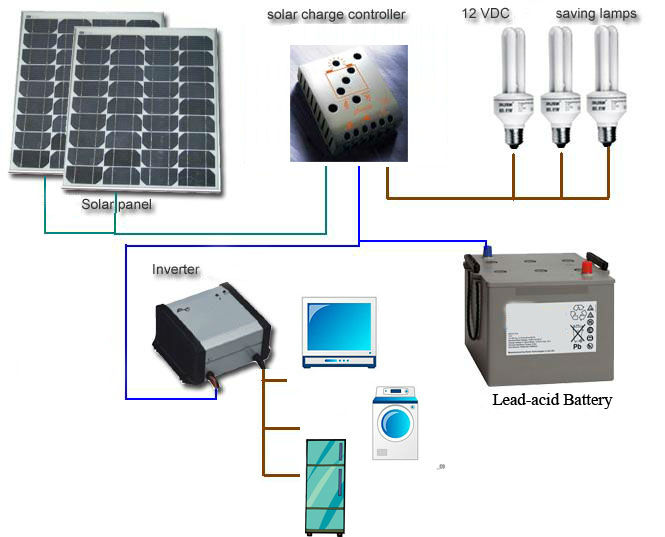
A grade high efficiency solar cells.
15 years limited warranty on material and workmanship
20 years limited warranty onpower
Characteristics
Modules: HYS120WM-36V
Cell: Monocrystalline solar cells (156*61mm)
NO. of cell: 72(4*18)
Maximum power at STC(Pm): 120W
Open circuit voltage(Voc): 42.48V
Optimum operating voltage(Vmp): 35.2V
Short circuit current(Isc): 3.77A
Optimum operating current(Imp): 3.40A
Dimension of module: 1196*669*35mm
Weight: 10kg
Certificate: ISO/CE/TUV/UL
STC:Irradiance 1000W/m2 ,Module temperature 25°C,AM=1.5 Blueprint of the module
Limits
Operating temperature: (-40 to +85°C)
Maximum System voltage: 1000VDC
Temperature and Coefficients
NOCT: (48±2)°C
Current temperature coefficients: (0.06±0.01)%/K
Voltage temperature coefficients: (-155±10)mV/K
Voltage temperature coefficients: (-0.5±0.05)%/K
NOCT:Nominal operation Temperature
Performance Warranty
15 years limited warranty on material and workmanship
20 years limited warranty on power output
Output
Type of terminal: Junction box
Cable: LAPP(4.0mm2)
Asymmetrical lengths: 900mm
The publication summarises warranty and specifications which are subject to change without notice.
- Q: A solar panel facing the sun at noon in mid-summer receives more intensity of the light than when it is at horizontal. However, it can receives more total solar energy when it is at horizontal than when it is tilted during a long summer day. Regradless if it is shaded by building or trees. why is that so?
- Angle is everything. The more angled away from perpendicular, the more light energy simply bounces away. Think of it like a windmill that can only spin, it can't change direction with the wind. If the wind is pointed through the vanes, the vanes turn and power is generated. If the wind is coming from the side, nothing moves and no power is generated.
- Q: What is the average size of a residential solar panel system?
- The average size of a residential solar panel system varies depending on factors such as energy needs, available roof space, and budget. However, a typical residential solar panel system in the United States is around 5 to 6 kilowatts (kW), which usually consists of around 15 to 20 solar panels.
- Q: How do solar panels affect the property's community image?
- Solar panels can have a positive impact on a property's community image by showcasing a commitment to sustainability and renewable energy. They can enhance the property's reputation as an environmentally conscious and forward-thinking community, leading to increased respect and admiration from residents and neighbors. Additionally, solar panels can act as a visual symbol of progress and innovation, contributing to a positive perception of the property and potentially attracting like-minded individuals or businesses to the community.
- Q: Do solar panels work in cloudy weather?
- Yes, solar panels do work in cloudy weather. While they may not produce as much electricity as they would on a sunny day, they can still generate power from diffused sunlight. Cloudy conditions can reduce the efficiency of solar panels, but they are still capable of converting light into electricity, making them a viable option for renewable energy even in less sunny areas.
- Q: Can solar panels be used in areas with high pollution?
- Yes, solar panels can still be used in areas with high pollution. While pollution can reduce their efficiency to some extent, solar panels can still generate electricity even in polluted areas. However, it is important to note that excessive pollution may result in a decrease in their overall performance and require more frequent maintenance to keep them clean and functioning optimally.
- Q: I know what they do and how they work, but at this point they're expensive, don't always produce enough electricity as needed, and can't be used when there's no sun, as in half the day. Wouldn't wind power seem so more efficient? Or if they do use solar panels, how about putting them in the desert. But I really believe that research money should go to fusion generators since that's the future and the answer to our problems. Which is best in your opinion?
- There is not a yes or no answer. But for the majority of the population it is a definite no. Because the energy needed to make a solar panel is more than the energy that a solar panel can return in its life time. so No for cities and urbanized areas because there is already existing infrastructure therefore you'll be wasting more energy getting them installed. And it is better and more efficient to have the more common energy sources for populated areas. However that being said it would be more efficient if you live in a remote area as it would not be worth it to build a huge electricity grid just to power one small house in the middle of no where.
- Q: i am very new to the solar world and i need help with some stuff to understand what i need to do.what AH battery should i use? i am planning on getting a 2V deep cycle gel based battery but i want to get the most power for my system so should i use something like a few 00AH in a battery bank system or a bunch or 50 or so amp hour batteries in a bank. also what kind of power am i looking at for the best battery system. in other words what kind of basic appliances like lighting, laptop,space heaters etc can can i run on the selected battery system and for how long? any help would be highly appreciated.
- A lot will depend on the Sun light available at location where you plan to install this. The electricity the panel generates is at times 0-20% only of what it is rated. Start small and do some initial readings on the generation and then scale up.
- Q: What is the proper diode to use on an 5v 500ma solar panel?
- At least a 2 amp diode. rated above the 2 volts that are commonly found on the market. A blocking diode must be able to stop a higher current and voltage than the panel maximum. A diode will work on any voltage and current lower than it rating.
- Q: I am planning to buy some solar panels for my cabin and i want to be able to store the electricity. what kind of batteries should i get? i will be running simple things like a tv and radio. where can i buy these batteries? where should i look for the best batteries?
- If you will be storing them outdoors, you can use auto batteries. Indoors, use sealed marine batteries. Number and size depends on your needs. You will need a charge controller between the solar panels and the batteries to get the maximum power out of the array and to avoid damage to the batteries. And you will need an inverter to convert the 2 or 24 volts to 20 or 240 VAC. One large lead acid battery will supply about 000 watt-hours of energy, enough for 200 watts for 5 hours. You have to look at your loads and decide on how many batteries you need. Frequently it is cheaper to buy new appliances that use less power, as that power difference can save a lot of money in batteries, inverter, charge controller and solar panels. But it sounds like a few thousand watt-hours will be enough, or 2 large batteries. The real limiting factor is how much money you want to spend for the solar panels themselves. .
- Q: Can solar panels be damaged by hail?
- Yes, solar panels can be damaged by hail. Hailstones can cause cracks or breaks in the glass surface of solar panels, potentially reducing their efficiency or causing them to stop working altogether. However, the extent of damage largely depends on the size and intensity of the hailstorm, as well as the quality and durability of the solar panels.
Send your message to us
Solar Panels Lubbock Texas - 100Wp Solar Module, Solar System, ISO Certified Companies
- Loading Port:
- China main port
- Payment Terms:
- TT OR LC
- Min Order Qty:
- 1 pc
- Supply Capability:
- 100000000 pc/month
OKorder Service Pledge
OKorder Financial Service
Similar products
Hot products
Hot Searches
Related keywords
